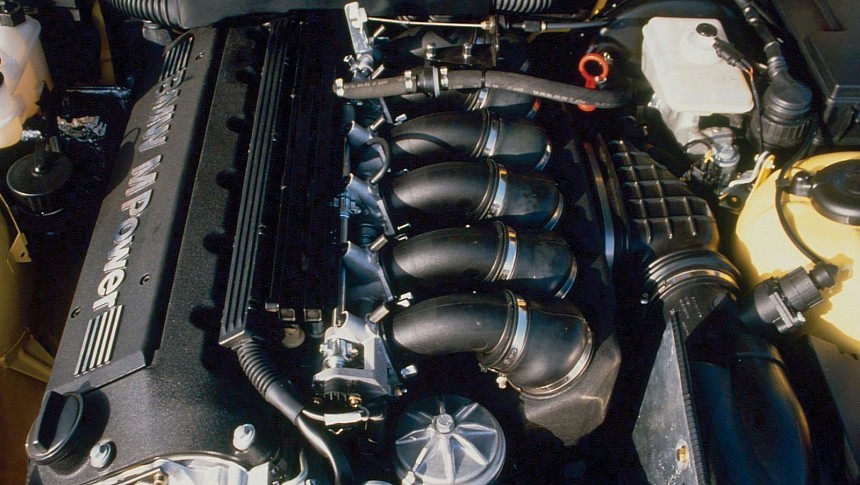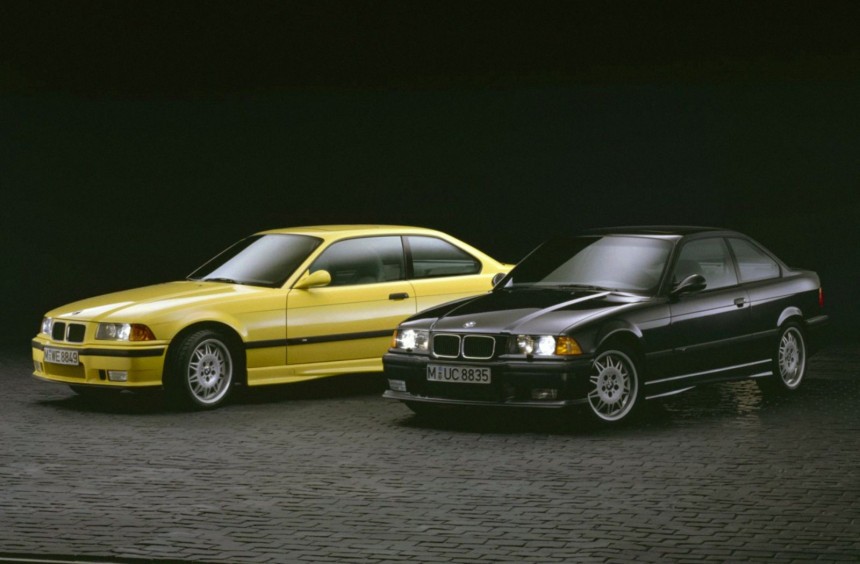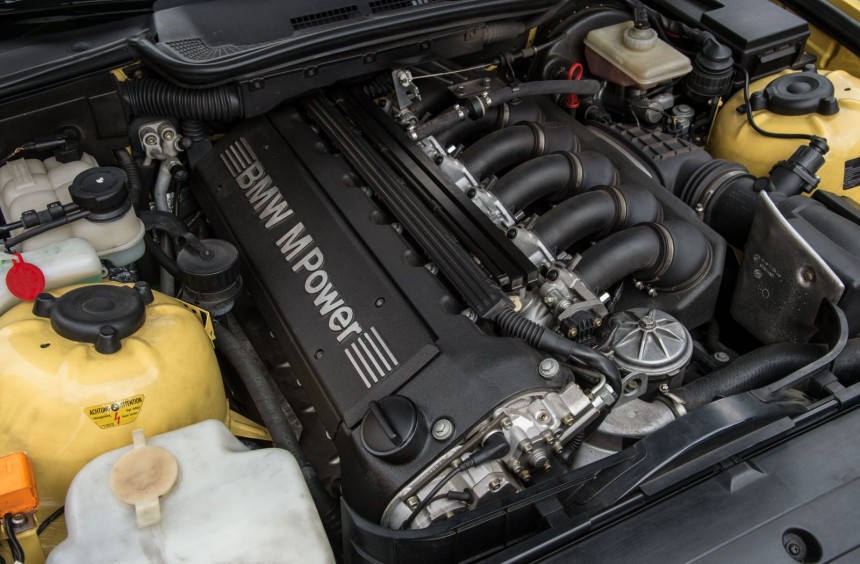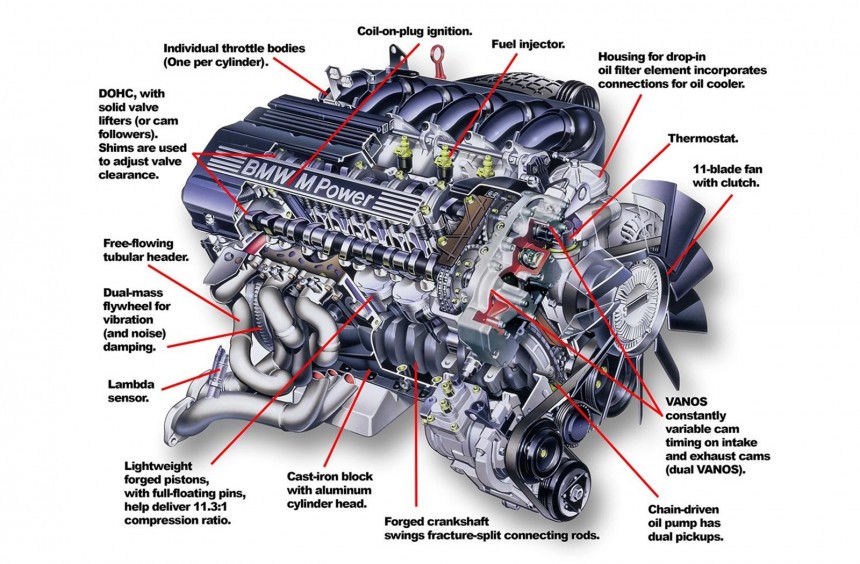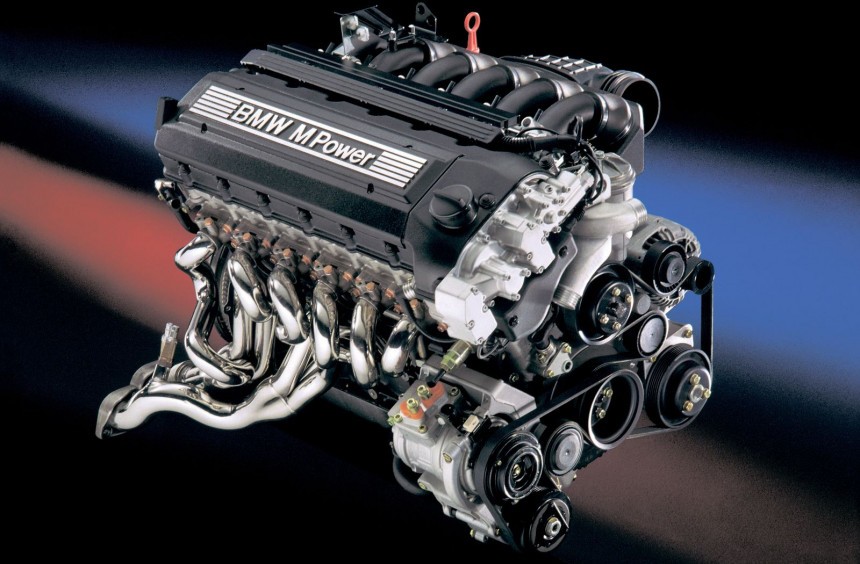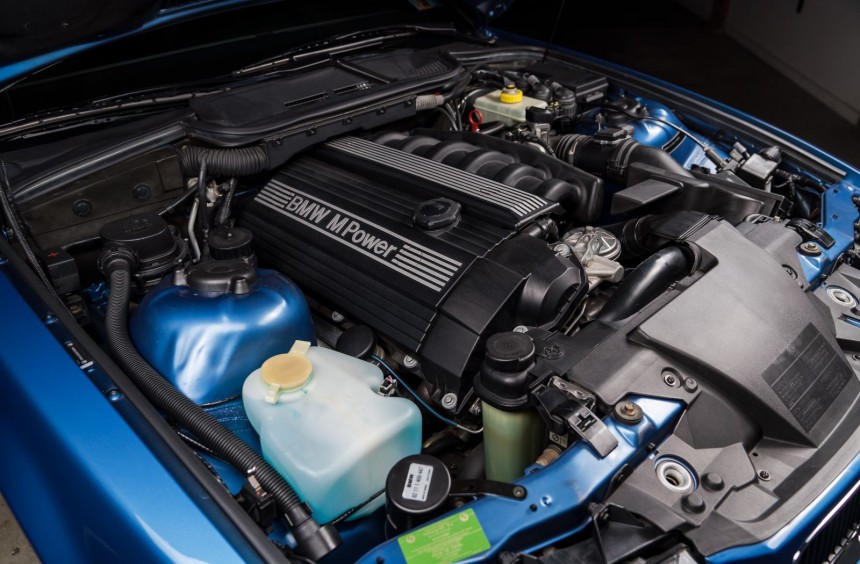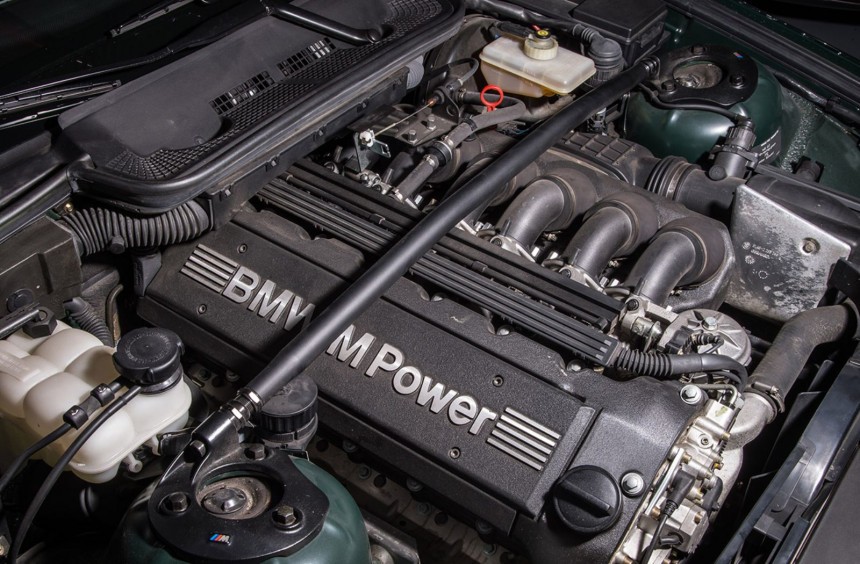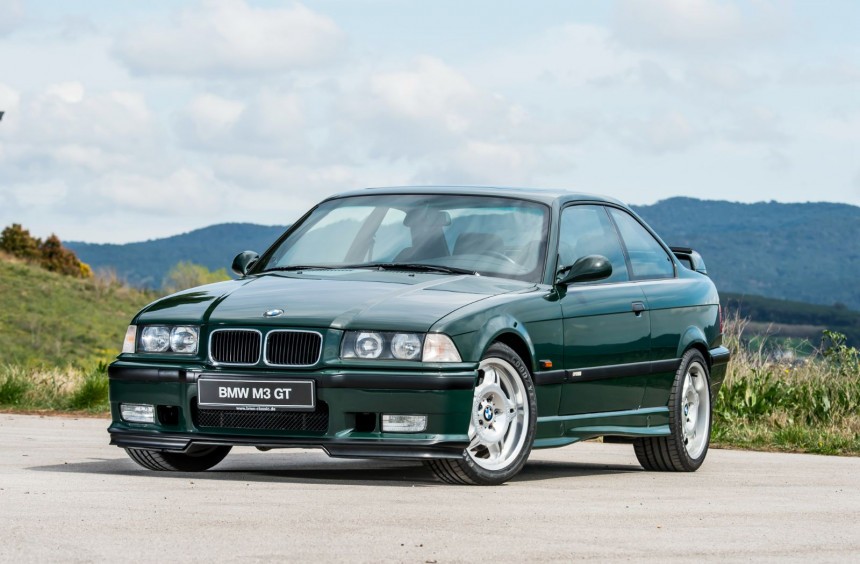After the E30 generation set the stage, the newer E34 helped make the M3 wildly popular worldwide. But while most buyers were treated to the legendary Euro-spec S50, US enthusiasts had to settle for a less powerful and less advanced version.
Founded in 1972, M division has been responsible for BMW's most iconic race and road models.
Nowadays, the M badges are used on many models that don't really deserve them - which is why BMW fans often joke that M stands for "marketing."
But, back when M stood for motorsport, only the true high-performance BMWs earned the right to use the badges.
Though it wasn't the first M-badged model (that distinction goes to the M1), the E30 M3 made the M division famous outside Europe.
That being said, US buyers weren't that enthusiastic about buying a race-bred homologation special with a four-cylinder under the hood. Out of around 17,000 E30 M3s built from 1986 to 1991, only 5,300 were delivered to North American dealerships, including 185 Canada-bound cars.
Initially, BMW planned to build 5,000 E30 M3s to meet the homologation requirements for the local Deutsche Tourenwagen Meisterschaft (DTM) and FIA's Group A touring car competitions.
However, the car was so good and so well-received by the public that the Germans struggled to meet demand, having to extend the production run far beyond their most optimistic predictions.
By 1990, the M division started working on a worthy successor based on the new E36 3 Series. The goal was to design a car that could not only exceed the popularity of the E30 M3 but also convince more enthusiasts from the all-important North American market to buy one.
Though it was no longer a homologation special, the new M3 was now more powerful, upscale, and technologically advanced.
Furthermore, in addition to the two-door coupe and convertible body styles carried over from its predecessor, the E34 was now available in a four-door sedan guise for those who wanted a roomier, more practical, high-performance ride.
Like the E30 M3, the new model received high-performance, M-tuned version of a 3 Series engine, but this time, the unit chosen by the engineering department led by the legendary Paul Rosche was a six-cylinder.
The base motor that got the M treatment was the cast-iron block DOHC M50, which, in its most powerful 3 Series guise, displaced 2.5 liters and made 189 hp.
Heavily upgraded, the new unit codenamed S50 was the first in a long line of inline-sixes found under the hood of an M3. After the E36, three of the following four M3 generations (including the current) received a six-cylinder.
The first version of the S50, which debuted under the hood of the Euro-spec E36 M3 in November 1992, was the S50B30.
Based on the 2.5-liter M30, the naturally-aspirated six was enlarged to 3.0 liters and received a series of upgrades that, at the time, made it the most advanced high-performance engine ever fitted inside the engine bay of an M model.
These upgrades included a ported and polished, free-flowing aluminum cylinder head, solid valve lifters, a single VANOS (variable valve timing system) on the intake side, individual throttle bodies, a bespoke exhaust system, a 10.8:1 compression ratio, and a Bosch Motronic M3.3 ECU.
Only available with a five-speed manual and able to rev up to 7,200 rpm, the S50B30 was rated at 282 hp and 236 lb-ft (320 Nm) of torque.
In 1995, the E36 M3 got a mid-cycle facelift, and an even better engine came with it.
Dubbed S50B32, the six-cylinder was enlarged to 3.2 liters, got a double-VANOS system, a secondary oil pickup, a new Siemens MSS50 ECU with three knock sensors, and a compression ratio bump to 11.3:1.
With those improvements, the redline rose to 7,600 rpm, while output went up to 321 hp.
Furthermore, a new six-speed manual replaced the five-speed, and a six-speed automated manual (SMG) was added to the options list.
This engine also made it under the hood of the Z3 M Coupe and M Roadster on all but the US-bound versions.
The E36 M3 was introduced in the North American market about two years after its European debut, and to meet federal emission standards, it featured a different engine.
Called S50B30US, it was also a 3.0-liter that received the M treatment, but it was more closely related to the conventional M50 than its Euro-spec sibling.
It received a sturdier crank, conrods, pistons, and cams, but it lacked individual throttle bodies and had the same 10.5:1 compression ratio as the M50B25TU found in the 325 and 525 gasoline-powered models.
This US-only version was available with a standard five-speed manual or an optional five-speed automatic. It redlined at 7,000 rpm and produced 240 hp. A 3.2-liter version (S52B32) replaced the 3.0-liter from 1996 onwards, but it only brought a slight increase in torque.
In 1994, BMW released the limited-edition M3 GT in mainland Europe in order to homologate the E36 M3 for FIA GT class II competitions.
Produced in 356 units, the GT featured an S50B30 with hotter cams, a dual-pickup oil pan, upgraded oil pumps, revized VANOS software, and a higher compression ratio, which led to 295 hp.
The year 1994 also marked the release of another M3 homologation special for Australia's Super Production series.
Dubbed M3-R and sold in 15 examples, the track-only, limited-edition featured a 322-hp S50B30 with more aggressive cams, modified intake and exhaust ports, a dual-pickup oil pump, and a lighter flywheel.
The S50B30 and its 3.2-liter sibling helped the E36 M3 sell far better than its predecessor. From 1992 to 1999, BMW produced 46,525 coupes, 12,114 convertibles, and 12,603 four-door sedans.
Despite the lesser engine, the M3 did surprisingly well in the US. Of the 71,242 units it produced, the Bavarian carmaker sold over 10,000 units across the Atlantic.
Officially, 45 Euro-spec, S50B30-powered M3s were imported and sold in Canada using a loophole that allowed low volumes of Norwegian-certified cars to be sold in the country.
These cars were imported in early 1994, and, according to the manufacturer, all 45 examples were sold in just three days.
Today, the Euro-spec S50 (and S52) is considered a BMW legend not just because it is the first six-cylinder to power an M3 but because it is an engineering masterpiece that provides plenty of power in stock form and has excellent tuning potential with simple bolt-on aftermarket parts.
If you want to learn more about the history of BMW M3 engines, we recommend watching the YouTube video below by Dust Runners Automotive Journal.
Nowadays, the M badges are used on many models that don't really deserve them - which is why BMW fans often joke that M stands for "marketing."
But, back when M stood for motorsport, only the true high-performance BMWs earned the right to use the badges.
Though it wasn't the first M-badged model (that distinction goes to the M1), the E30 M3 made the M division famous outside Europe.
That being said, US buyers weren't that enthusiastic about buying a race-bred homologation special with a four-cylinder under the hood. Out of around 17,000 E30 M3s built from 1986 to 1991, only 5,300 were delivered to North American dealerships, including 185 Canada-bound cars.
The arrival of the E34 M3
However, the car was so good and so well-received by the public that the Germans struggled to meet demand, having to extend the production run far beyond their most optimistic predictions.
By 1990, the M division started working on a worthy successor based on the new E36 3 Series. The goal was to design a car that could not only exceed the popularity of the E30 M3 but also convince more enthusiasts from the all-important North American market to buy one.
Though it was no longer a homologation special, the new M3 was now more powerful, upscale, and technologically advanced.
Furthermore, in addition to the two-door coupe and convertible body styles carried over from its predecessor, the E34 was now available in a four-door sedan guise for those who wanted a roomier, more practical, high-performance ride.
The first in a long line of epic six-cylinders
The base motor that got the M treatment was the cast-iron block DOHC M50, which, in its most powerful 3 Series guise, displaced 2.5 liters and made 189 hp.
Heavily upgraded, the new unit codenamed S50 was the first in a long line of inline-sixes found under the hood of an M3. After the E36, three of the following four M3 generations (including the current) received a six-cylinder.
An engineering tour de force
Based on the 2.5-liter M30, the naturally-aspirated six was enlarged to 3.0 liters and received a series of upgrades that, at the time, made it the most advanced high-performance engine ever fitted inside the engine bay of an M model.
These upgrades included a ported and polished, free-flowing aluminum cylinder head, solid valve lifters, a single VANOS (variable valve timing system) on the intake side, individual throttle bodies, a bespoke exhaust system, a 10.8:1 compression ratio, and a Bosch Motronic M3.3 ECU.
Only available with a five-speed manual and able to rev up to 7,200 rpm, the S50B30 was rated at 282 hp and 236 lb-ft (320 Nm) of torque.
The improved S50B32
Dubbed S50B32, the six-cylinder was enlarged to 3.2 liters, got a double-VANOS system, a secondary oil pickup, a new Siemens MSS50 ECU with three knock sensors, and a compression ratio bump to 11.3:1.
With those improvements, the redline rose to 7,600 rpm, while output went up to 321 hp.
Furthermore, a new six-speed manual replaced the five-speed, and a six-speed automated manual (SMG) was added to the options list.
This engine also made it under the hood of the Z3 M Coupe and M Roadster on all but the US-bound versions.
What the US got
Called S50B30US, it was also a 3.0-liter that received the M treatment, but it was more closely related to the conventional M50 than its Euro-spec sibling.
It received a sturdier crank, conrods, pistons, and cams, but it lacked individual throttle bodies and had the same 10.5:1 compression ratio as the M50B25TU found in the 325 and 525 gasoline-powered models.
This US-only version was available with a standard five-speed manual or an optional five-speed automatic. It redlined at 7,000 rpm and produced 240 hp. A 3.2-liter version (S52B32) replaced the 3.0-liter from 1996 onwards, but it only brought a slight increase in torque.
Special versions of the S50 that the US also missed out on
Produced in 356 units, the GT featured an S50B30 with hotter cams, a dual-pickup oil pan, upgraded oil pumps, revized VANOS software, and a higher compression ratio, which led to 295 hp.
The year 1994 also marked the release of another M3 homologation special for Australia's Super Production series.
Dubbed M3-R and sold in 15 examples, the track-only, limited-edition featured a 322-hp S50B30 with more aggressive cams, modified intake and exhaust ports, a dual-pickup oil pump, and a lighter flywheel.
Making the E36 a best-seller, even without its availability on the US market
Despite the lesser engine, the M3 did surprisingly well in the US. Of the 71,242 units it produced, the Bavarian carmaker sold over 10,000 units across the Atlantic.
Officially, 45 Euro-spec, S50B30-powered M3s were imported and sold in Canada using a loophole that allowed low volumes of Norwegian-certified cars to be sold in the country.
These cars were imported in early 1994, and, according to the manufacturer, all 45 examples were sold in just three days.
Today, the Euro-spec S50 (and S52) is considered a BMW legend not just because it is the first six-cylinder to power an M3 but because it is an engineering masterpiece that provides plenty of power in stock form and has excellent tuning potential with simple bolt-on aftermarket parts.
If you want to learn more about the history of BMW M3 engines, we recommend watching the YouTube video below by Dust Runners Automotive Journal.
